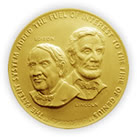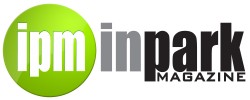 |
| National Inventors Hall of Fame medal |
ALEXANDRIA, Va., March 3, 2011 /PRNewswire/ — Continuing to celebrate its mission of recognizing and fostering invention, the National Inventors Hall of Fame has announced its 2011 Inductees. The life-changing innovations that have come about through this year’s class include the sensor that makes cameras in today’s cell phones possible, the battery that powers most implantable defibrillators, and the basis of exchanging secure information over the Internet.
This year’s Induction ceremony, sponsored in part by the United States Patent and Trademark Office and the Kauffman Foundation, will take place on May 4 at the historic Patent Office Building, now the Smithsonian American Art Museum and the National Portrait Gallery, in Washington, D.C. The location is particularly appropriate because this year’s class of inductees includes a group of 29 historical inventors who will be recognized posthumously, most of whom would have submitted patent applications to the same building where they will be honored.
National Inventors Hall of Fame 2011 Inductees
Living
George Devol
Unimate Industrial Robot – George Devol‘s patent for the first digitally operated programmable robotic arm represents the foundation of the modern robotics industry. The first Unimate industrial robot was installed at an automotive plant in 1961.
Whitfield Diffie, Martin Hellman, Ralph Merkle
Public-key Cryptography – In 1976, Whitfield Diffie, Martin Hellman, and Ralph Merkle developed public key cryptography (PKC), a radically new method for securing electronic communications. PKC provides security on the otherwise highly insecure Internet, making it vital to such areas as e-commerce.
Eric Fossum
CMOS Active Pixel Image Sensor – Eric Fossum, now at Dartmouth College, led the team at NASA’s Jet Propulsion Laboratory that created the CMOS active pixel sensor camera-on-a-chip. Today, CMOS image sensors are a fixture in camera phones, and other applications include digital SLR cameras, embedded web-cams, automotive safety systems, swallowable pill cameras, toys and video games, and wireless video-security networks.
Gary Michelson
Spinal Surgical Devices – Orthopedic spinal surgeon Gary Michelson has a portfolio of over 250 U.S. and 500 foreign patents related to minimally invasive spinal fusion methods, instruments, and implants.
Steve Sasson
Digital Camera – In 1975, Kodak engineer Steve Sasson created a device that captured an image, converted it to an electronic signal, digitized the signal, and stored the image—the first digital camera. In 2008, 73% of Americans owned a digital camera and 34 million digital cameras were sold in the U.S., generating $7 billion in revenue. Virtually all of today’s digital cameras rely on the same structure invented in 1975.
Esther Takeuchi
Lithium/Silver Vanadium Oxide (Li/SVO) Battery – Energy storage expert Esther Takeuchi, now at the University at Buffalo, led efforts at Greatbatch, Inc. to invent and refine the lifesaving Li/SVO battery technology, utilized in the majority of today’s implantable cardioverter defibrillators (ICDs).
N. Joseph Woodland, Bernard Silver (1935-1963)
First Optically Scanned Bar Code – Joe Woodland and Bernard Silver (deceased) invented the first optically scanned barcode, prompted in their work in 1948 after Silver overheard a food chain executive discussing his wish to capture product information at checkout.
Historical
|
Mary Anderson (1933-2008), Windshield Wiper
|
|
|
Thomas Armat (1866-1948), Motion Picture Projector
|
|
|
Edwin Binney (1866-1934), Carbon Black Manufacturing
|
|
|
George A. Campbell (1870-1954), Loading Coil
|
|
|
Albert B. Dick (1870-1954), Duplicating Equipment
|
|
|
Carleton Ellis (1876-1941), Margarine
|
|
|
Hannibal Goodwin (1822-1900), Transparent Flexible Nitrocellulose Film
|
|
|
John Hays Hammond, Jr. (1888-1965), Radio Control
|
|
|
Francois Hennebique (1842-1921), Reinforced Concrete Construction
|
|
|
Peter Cooper Hewitt (1861-1921), Mercury-vapor Lamp
|
|
|
Frederick Ives (1856-1937), Color Photography
|
|
|
Charles F. Jenkins (1867-1934), Motion Picture Projector
|
|
|
Clarence Kemp (unknown -1911), Solar Water Heater
|
|
|
Henry M. Leland (1843-1932), Interchangeable Parts for Automobiles
|
|
|
Stanley Macomber (1887-1967), Open Web Joist
|
|
|
Warren Marrison (1896-1980), Quartz Clock
|
|
|
Thomas Murray (1860-1929), Early Power Generation
|
|
|
Eadweard Muybridge (1830-1904), Stop Action Photography
|
|
|
Walther H. Nernst (1864-1941), Metallic Filament Incandescent Lamp
|
|
|
Henry Phillips (1890-1958), Phillips Screw
|
|
|
Valdemar Poulsen (1869-1942), Magnetic Wire Recorder
|
|
|
Michael Pupin (1858-1935), Loading Coil
|
|
|
James Ritty (1836-1918) & John Ritty (ca. 1834-1913), Cash Register
|
|
|
Wallace C. Sabine (1868-1919), Architectural Acoustics
|
|
|
Eugene Sullivan (1872-1962), Borosilicate Glass
|
|
|
Carl A. von Welsbach (1858-1929), Improvements to Gas Lighting
|
|
|
Thomas A. Watson (1854-1934), Improvements to Telephone
|
|
|
Rollin Henry White (1872-1962), Flash Boiler for Generating Steam
|
|
“We’re pleased to present such a stellar group of 2011 Inductees,” said Edward Gray, Chairman of the Board of Directors of the National Inventors Hall of Fame, “We hope that their accomplishments remind us of the great innovation in America’s past and the importance to America of continued innovation today.”
The National Inventors Hall of Fame annually accepts nominations for men and women whose work has changed society and improved the quality of life. The candidate’s invention must be covered by a United States patent, and the work must have had a major impact on society, the public welfare, and the progress of science and the useful arts.
About the Hall of Fame
The National Inventors Hall of Fame is the premier non-profit organization in America dedicated to honoring legendary inventors whose innovations and entrepreneurial endeavors have changed the world. Founded in 1973 by the United States Patent and Trademark Office and the National Council of Intellectual Property Law Association, the Hall of Fame will have 460 Inductees with its 2011 Induction. The National Inventors Hall of Fame and Museum is located in the atrium of the Madison Building on the campus of the United States Patent and Trademark Office, at 600 Dulany Street, Alexandria, VA. Hall of Fame hours are Monday through Friday 9 AM to 5 PM, and Saturday from Noon to 5 PM (closed Sundays and federal holidays). Admission is free. For more information on the National Inventors Hall of Fame, including Inductee nomination forms, and a full listing of Inductees, please visit www.invent.org.





